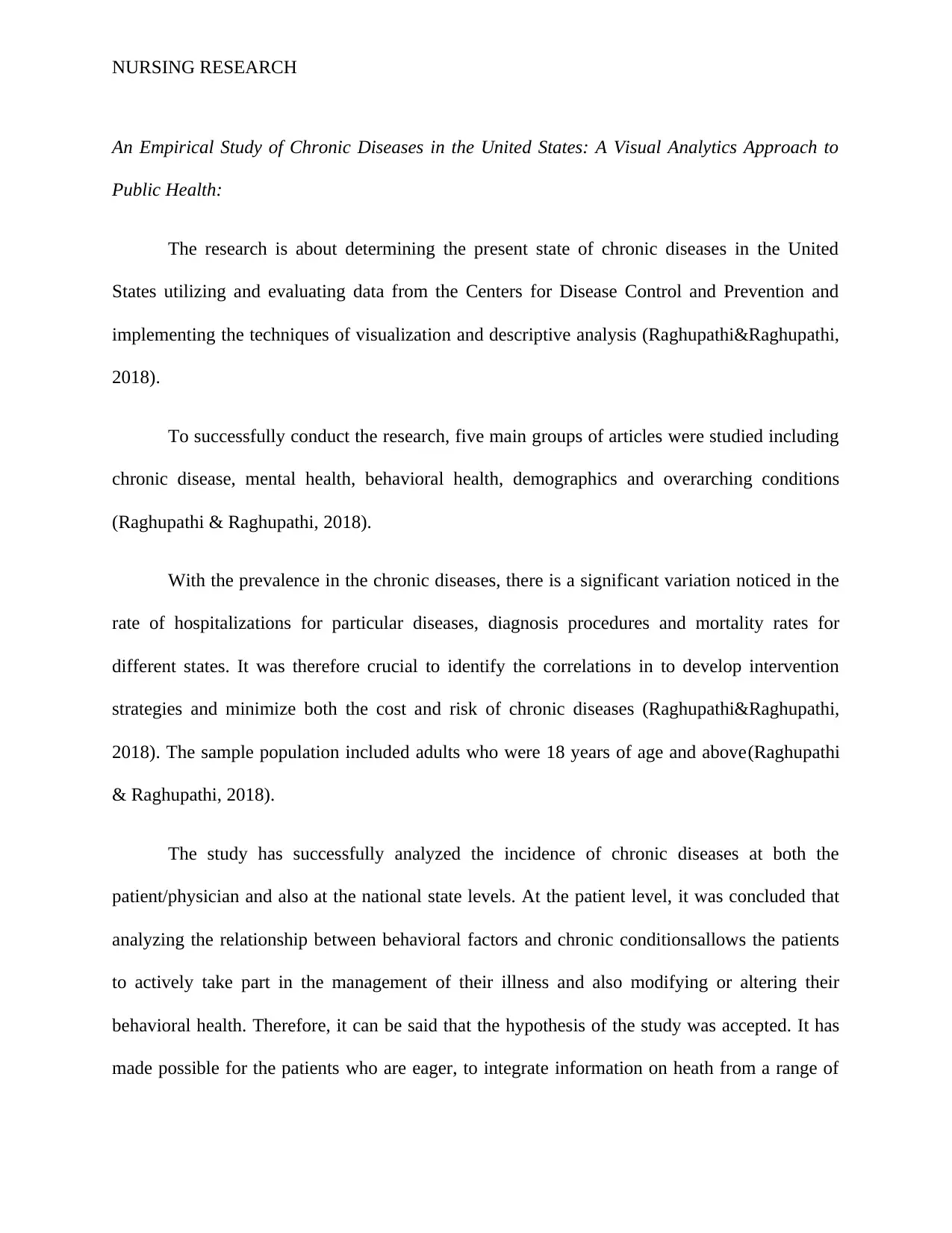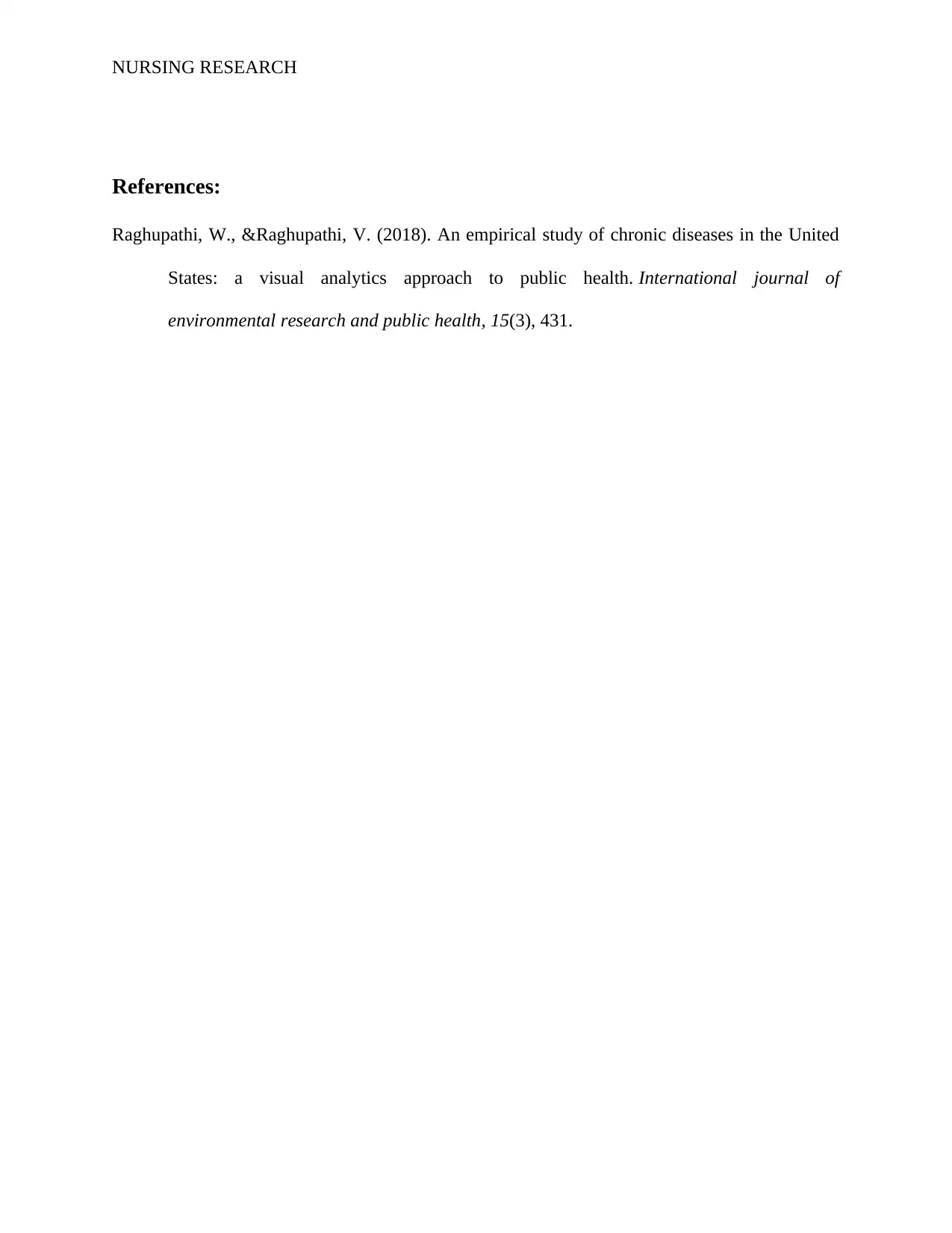Public Health: Chronic Diseases Analysis with Visual Analytics
VerifiedAdded on 2022/10/17
|4
|391
|12
Report
AI Summary
This report analyzes chronic diseases in the United States using visual analytics and descriptive analysis, drawing data from the Centers for Disease Control and Prevention. The study examines chronic diseases, mental health, behavioral health, and demographics. It highlights variations in hospitalization rates, diagnosis procedures, and mortality rates across different states. The research aims to identify correlations and develop intervention strategies to reduce the cost and risk of chronic diseases. The study included adults aged 18 and above, and it concludes that analyzing behavioral factors allows patients to actively manage their illnesses and modify their behavior, supporting a more individualized care model. The report emphasizes the importance of patient self-management and timely medical care based on the research findings.
1 out of 4











![[object Object]](/_next/static/media/star-bottom.7253800d.svg)